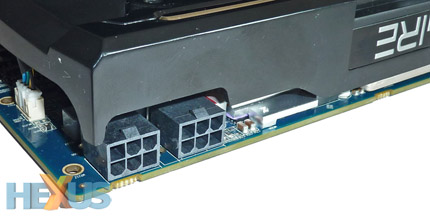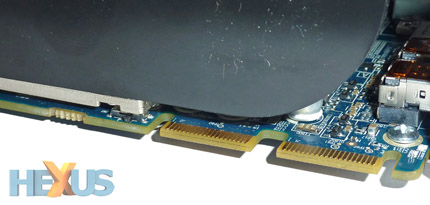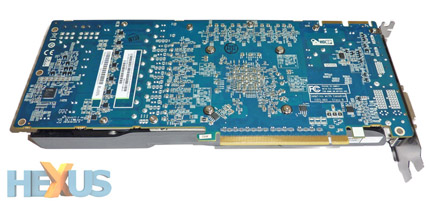Correcting AMD's 'mistake'
We've often commented on the disparity between the power of high-end graphics cards - now expressed as trillions of operations per second - and the gaming software that runs on it. In fact, seeing average frame-rates in excess of 100fps is fairly common at a full-HD resolution, so NVIDIA and AMD have cooked up methods by which the substantial power of quality graphics cards can be better used.
Perhaps in a bid to outdo one another, successive iterations of GeForce and Radeon cards have upped the image quality to incredible levels - more so when used in two- or three-card setups. Having 32x AA (antialiasing) is all well and good on a specification sheet, folks, but we encourage anyone to visually determine the difference between 8x and 16x on a static shot, let alone when playing a fast-paced game.
But having the ability to run three, or more, screens is a game-changer. NVIDIA has its (3D) Vision Surround while AMD boasts (up to) six-screen multi-monitor support with Eyefinity. We believe that driving three screens - whether for productivity or gaming - makes most sense for the majority of readers, based on a subjective cost vs. utility metric.
The trouble for AMD's Eyefinity-totin' cards is that, generally speaking, running three screens requires one output to be DisplayPort. While the connection is technically sound and forward-looking, DisplayPort-integrated monitors tend to have a considerable price premium over the ubiquitous, pervasive DVI crowd. Yup, you can purchase expensive adapters that skirt the DP issue, but wouldn't it be handy to run three regular DVI monitors off a single Radeon card?
This preamble brings us on to the reason why Sapphire, AMD's largest add-in board partner, has released the FleX edition of cards. You see, Sapphire's FleX have additional circuitry that eliminates the need to use an 'active' adapter when hooking up a third DVI monitor, thereby bringing three-screen fun to the masses.
FleX cards are available throughout the Radeon HD 5000 and HD 6000 range. They make sense for low-end cards as they facilitate a relatively cheap method of running three DVI-equipped monitors for productivity reasons. High-end Sapphire cards also make sense in FleX guise, for they can run a trio of screens for gaming purposes. That said, GPUs stuck somewhere in the middle - say, Radeon HD 6750 - fall into no-GPUs land; a little too expensive for productivity and not fast enough for gaming.
We grabbed a Radeon HD 6950 2GB FleX card for evaluation. It's outfitted with a Vapor-X cooler for, Sapphire says, better thermals and a lower noise output when compared to the reference card. The PCB-wide heatsink uses, as the name suggests, vapour-chamber technology to move heat way from the GPU and to the aluminium fins inside the shroud. An 88mm centrally-mounted fan drives cooler air over the fins.
Ports-wise, the rear is a replica of the reference card, that is, single-link DVI, dual-link DVI, HDMI and a couple of mini-DisplayPort connectors. However, AMD's card cannot, out of the box, run both DVI ports and the HDMI in concert for three-screen Eyefinity. The reason for this rests with the HDMI port and single-link DVI sharing a clock generator - you can use one or the other, not both (concurrently). Sure, making use of the other outputs, an 'active' DisplayPort-to-DVI adapter can be used, purchased separately, but they tend to retail for £20 - matching the price premium of this card over regular HD 6950s.
Sapphire steps in by adding the required clock generator to the HDMI port on the PCB, such that the trio of connections is active. A cheap (passive) HDMI-to-DVI adapter is included in the bundle and this is how three DVI monitors are run without touching the two mini-DisplayPorts. Indeed, five displays can be driven off this card without requiring additional hubs or connectors.
Really, AMD should have included a dedicated clock generator for the HDMI port, precisely for the reason that Sapphire includes it here, but AMD's loss is Sapphire's gain, we guess.
While there's plenty that's non-reference about this card, the power plugs very much are. And so is the frequency, coming in at a reference-matching 800MHz core and 5,000MHz memory.
Look closely and you will spy the BIOS-toggling switch that's a hallmark of the Radeon HD 69xx cards. Flicking it over does nothing on this card, though the possibility exists, however uncertain, that it can be unlocked and flashed to a faster Radeon HD 6970 part.
A 2GB frame-buffer, all contained on the topside, makes a lot of sense on this model. It's needed to smooth-out performance once a trio of 1,680x1,050 or 1,920x1,080 monitors are run, expanding the resolution to, potentially, over 6MP.
Currently retailing for around £225, representing a 10 per cent premium over the cheapest HD 6950 cards, this one's all about making use of them DVI monitors. And we do just that...














